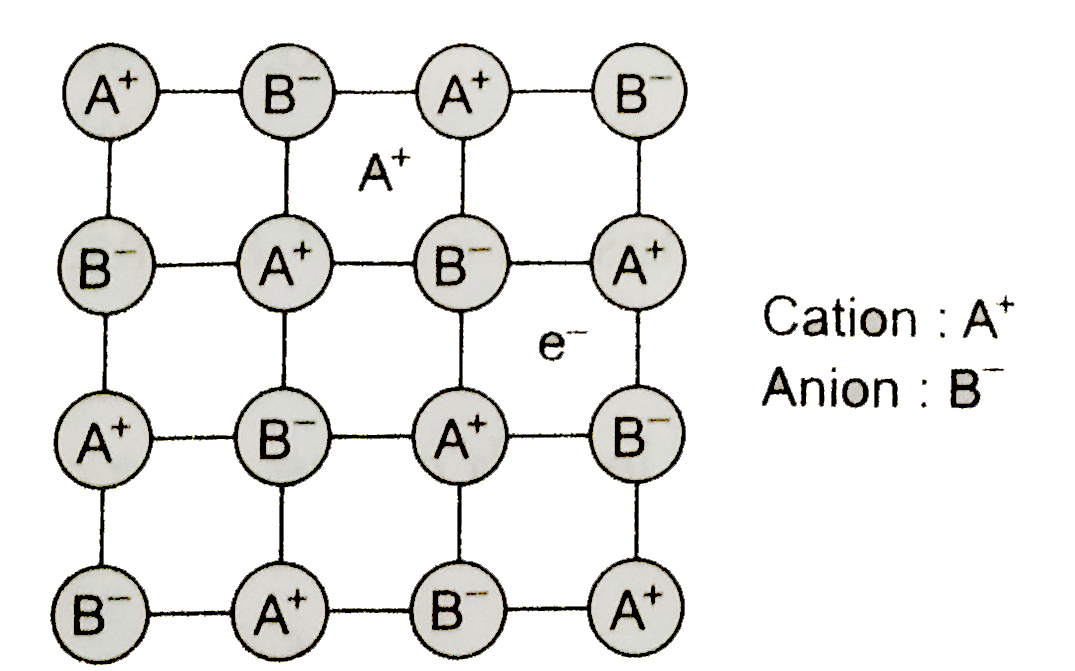Frenkel defects asre observed where the differnce in size of cation and anion is large
The density of crystals having Frenkel defect is less than that of a pure percfect crystal
In an ionic crystal having Frenkel defect may also contian Schottky defrect
Usually alkali halides do not Frenkel defect
Usually alkali halides do not have Frenkel defect
The correct Answer is:B
Step by step video, text & image solution for Frenkel defects asre observed where the differnce in size of cation and anion is large by Chemistry experts to help you in doubts & scoring excellent marks in Class 11 exams.
Topper's Solved these Questions
- BOOK - NARENDRA AWASTHICHAPTER - SOLID STATEEXERCISE - Level 1 (Q.33 To Q.62)1videos
SOLID STATE
- BOOK - NARENDRA AWASTHICHAPTER - SOLID STATEEXERCISE - Level 3 - One Or More Answers Are Correct1videos
SOLID STATE
- BOOK - NARENDRA AWASTHICHAPTER - IONIC EEQUILIBRIUMEXERCISE - Exercise196videos
IONIC EEQUILIBRIUM
- BOOK - NARENDRA AWASTHICHAPTER - STOICHIOMETRYEXERCISE - Level 3 - Subjective Problems20videos
STOICHIOMETRY
Similar Questions
Knowledge Check
- Question 1 - Select One
Frenkel defect is generally observed in
AAgBrBAglCZnSDall of these. - Question 2 - Select One
Assertion:Frenkel defect is also called dislocation defect
Reason:Frenkel defect is shown by ionic substances in which cation and anion are of almost similar sizes.AIf both assertion and reason are true and reason is the correct explanation of assertionBIf both assertion and reason are true but reason is not the correct explanation of assertion.CIf assertion is true but reason is falseDIf both assertion and reason are false - Question 3 - Select One
(A) KCL is more likely to show Schottky defect ,while Li is more likely to show Frenkel defect.
(R) Schottly defect is found in those ionic solid which have cation and anion of similar size while Frenkel defect is more likely found in those solids which have cation of smaller size.AIf both (A) and (R) are correct, and (R) is the correct explanation of (A).BIf both (A) and (R) are correct but (R) is not the correct explanation of (A).CIf (A) is correct but (R) is incorrect.DIf (A) is incorrect but (R) is correct.
A : In Schottky defect, density of crystal decreases.
R : Equal number of cations and anions are missing in Schottky defect.View SolutionIonic lattic has two major points defects ,(1) Schottky (2) Frenkel defects . Schottkly defects occurs due to the cations - anion pair's missing from the lattice sites . Frenkel defects occurs levels its lattic site and fits into an intersitial space. The neturaity of the crystal is benig maintained and we considerd all losses from interstitical positions.
which defect decrease density of the crystal ?View SolutionIonic lattic has two major points defects ,(1) Schottky (2) Frenkel defects . Schottkly defects occurs due to the cations - anion pair's missing from the lattice sites . Frenkel defects occurs levels its lattic site and fits into an intersitial space. The neturaity of the crystal is benig maintained and we considerd all losses from interstitical positions.
Structure shown here represents :
 View Solution
View SolutionIonic lattic has two major points defects ,(1) Schottky (2) Frenkel defects . Schottkly defects occurs due to the cations - anion pair's missing from the lattice sites . Frenkel defects occurs levels its lattic site and fits into an intersitial space. The neturaity of the crystal is benig maintained and we considerd all losses from interstitical positions.
Structure shown here represents :
 View Solution
View SolutionWhich one of the following has minimum value of size of cation/anion ratio ?
View Solution

